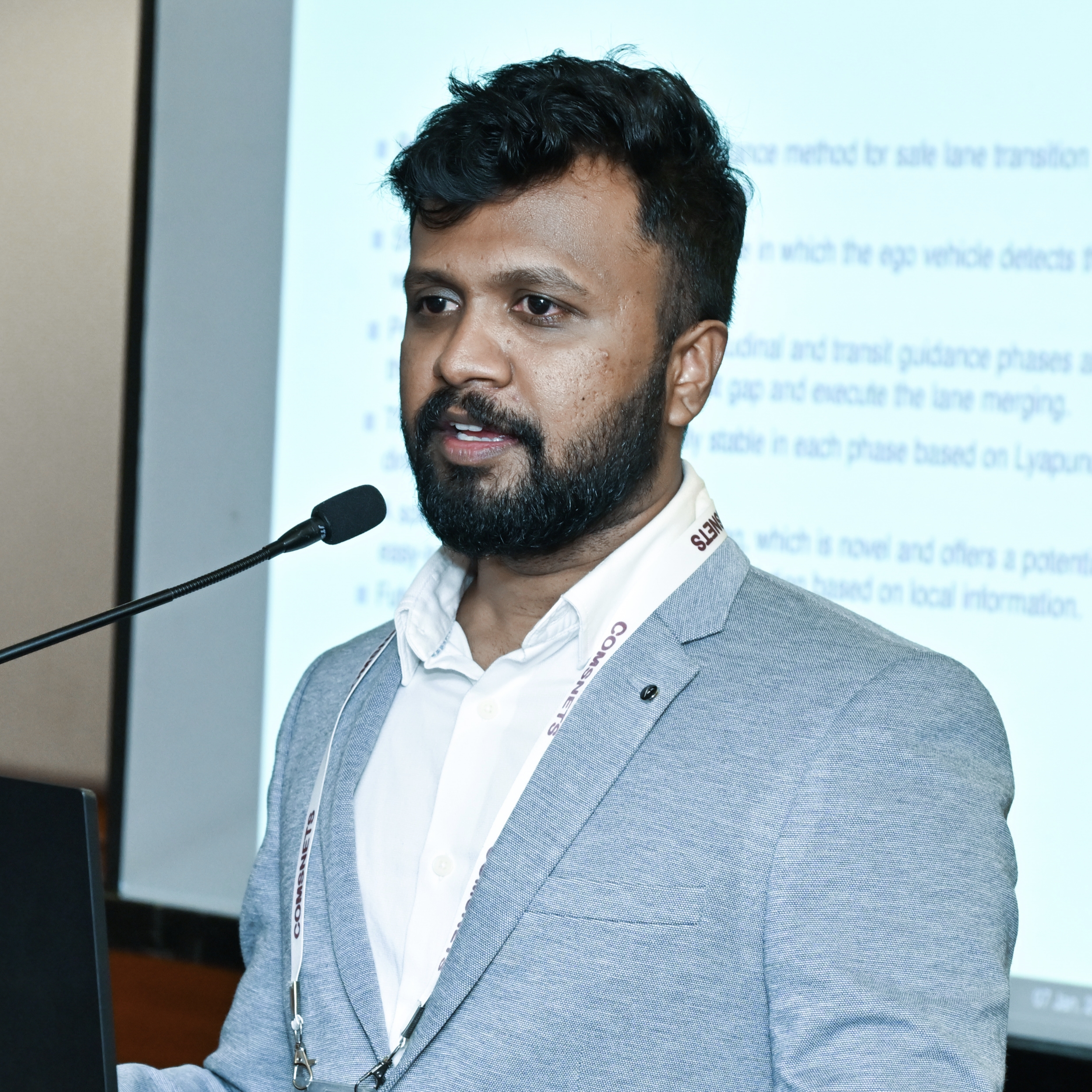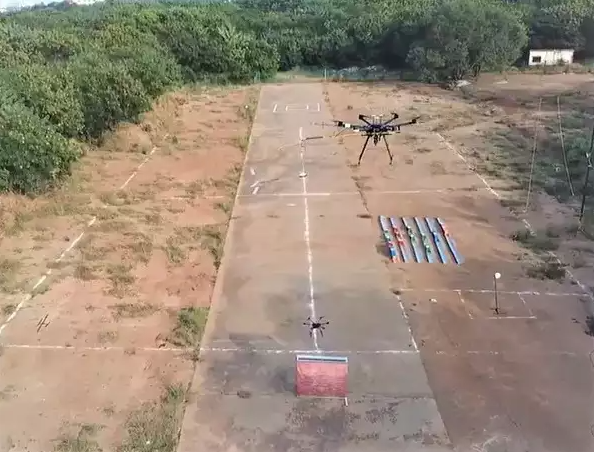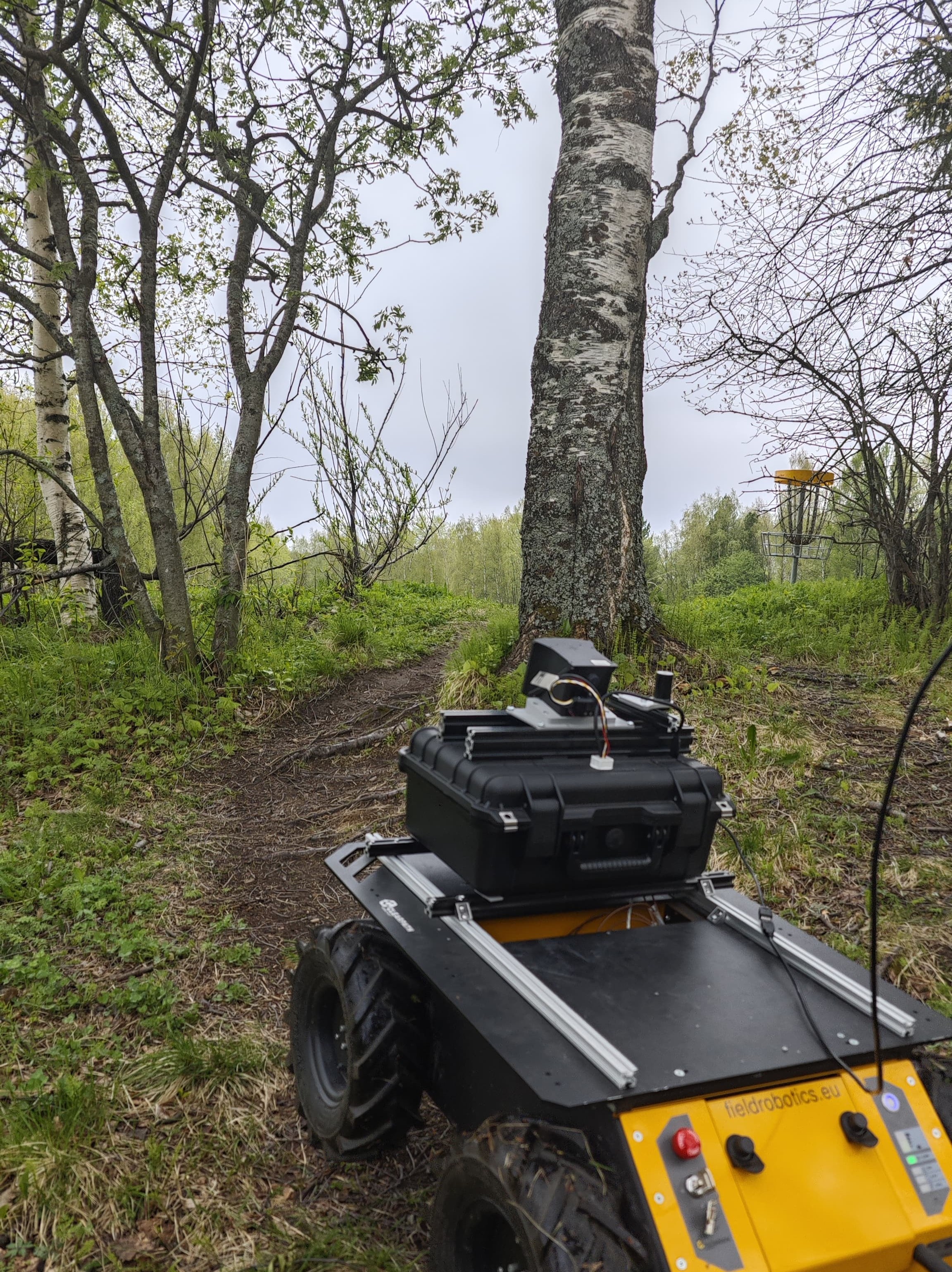


A new lane transition guidance method for a quadrotor flying in an air corridor system. Utilizing the bearing information of the neighboring vehicles, the guidance method directs the quadrotor for a safe transition between two lanes. Comprising three sequential guidance phases, the method includes discerning guidance for determining neighboring vehicle velocity, longitudinal guidance to identify suitable gaps in the destination lane, and transit guidance to maneuver the quadrotor into the desired gap.
A novel guidance method enabling quadrotors to traverse planar gaps using bearings-only information of gap extremities. The proposed heading direction is designed using an elliptic shaping angle derived from the angular bisector orientation of the gap-bearing angles.
This research work considers a three-dimensional window traversal problem and proposes a guidance solution using the bearing information of window vertices. The guidance logic governs the commanded flight path angle and heading angle of the quadrotor. These commands comprise an angular bisector component with a shaping angle, facilitating traversal along a direction normal to the window plane and passing through the centroid.

Traversability-aware motion planning through a forest environment using VLM.
My educational journey focused on robotics and control.
Indian Institute of Science, Bengaluru, India
Thesis: "Bearings-Only Quadrotor Guidance in Gap Traversal Scenarios"
Download PDF
Advisor: Dr. Ashwini Ratnoo
National Institute of Technology Calicut, India
Thesis: "Design and real-time implementation of LabVIEW-based Fractional Order PID controller for a Magnetic Levitation system"
Download PDF
Specialization: Instrumentation and Control Systems
GPA: 8.36
LBS College of Engineering, Kannur University, India
Percentage: 78.03
Honors: University First Rank Holder (Gold Medalist)
My career path spans both academic and industry research.
Robotics and Artificial Intelligence, Department of Computer Science, Electrical and Space Engineering, Luleå University of Technology, Sweden
Autonomous Vehicles Laboratory, Department of Aerospace Engineering, Indian Institute of Science(IISc), Bengaluru, India
National Institute of Technology, Thiruchirappally, India
Actively engaged in several cutting-edge research initiatives with interdisciplinary teams and industry partners.
Funding: SCA, LTU, Bo Rydin Foundation for Scientific Research [2025]-[2026]
Role: Project Lead
A project on autonomous navigation using Vision-Language Models (VLM), focusing on a Husky ground robot operating within complex forest environments. This project integrates LiDAR-based point cloud data collection and AI-driven methods for tree segmentation, digital terrain modeling, and estimation of tree parameters.
Peer-reviewed articles, conference proceedings, book chapters, and other scholarly works contributing to the advancement of knowledge in [Your Field].
Authors: E. K. Midhun, A. Ratnoo
Journal: Journal of Guidance, Control, and Dynamics, Vol. X, No. Y, pp. Z-ZZ 2025
Impact Factor: X.XXX | Citations: XX
This paper addresses a novel bearings only three-dimesional guidance law for quadrotor window traversal applications
Authors: E. K. Midhun, A. Ratnoo
Journal: Journal of Guidance, Control, and Dynamics, Vol. 45, No. 12, pp. 2360-2368 2022
Impact Factor: X.XXX | Citations: 4
This manuscript introduces an autonomous plannar gap traversal strategies for quadrotor relying completly on onboard bearings only information
Authors: E. K. Midhun, A. Ratnoo
Journal: Journal of Guidance, Control, and Dynamics, Vol. X, No. Y, pp. Z-ZZ 2025
Impact Factor: X.XXX | Citations: XX
This paper addresses a novel bearings only three-dimesional guidance law for quadrotor window traversal applications
Authors: Yourname, R., Lastname, F.
Conference: Proceedings of the XXth International Conference on [Topic], pp. XX-XX (Year)
Venue: [City, Country] | Presentation Type: [Oral/Poster]
Summary of the conference presentation, including key points discussed and feedback received from the community. Mention if it won any awards.
Authors: Yourname, R., Seniorauthor, P.
Book: "Book Title", Editors: Editor1, Editor2, Publisher, pp. XX-XX (Year)
ISBN: XXX-XXXXXXXXXX
Description of the book chapter's focus and your contributions. Mention the book's significance and intended audience (textbook, reference work, etc.).
Authors: Collaborator, A., Yourname, R., Lastname, F.
Status: Submitted to [Journal Name] | Under Review
Preprint: arXiv:XXXX.XXXXX | Date: Month Year
Summary of the working paper's key contributions and current status in the publication process. Include links to preprint servers.